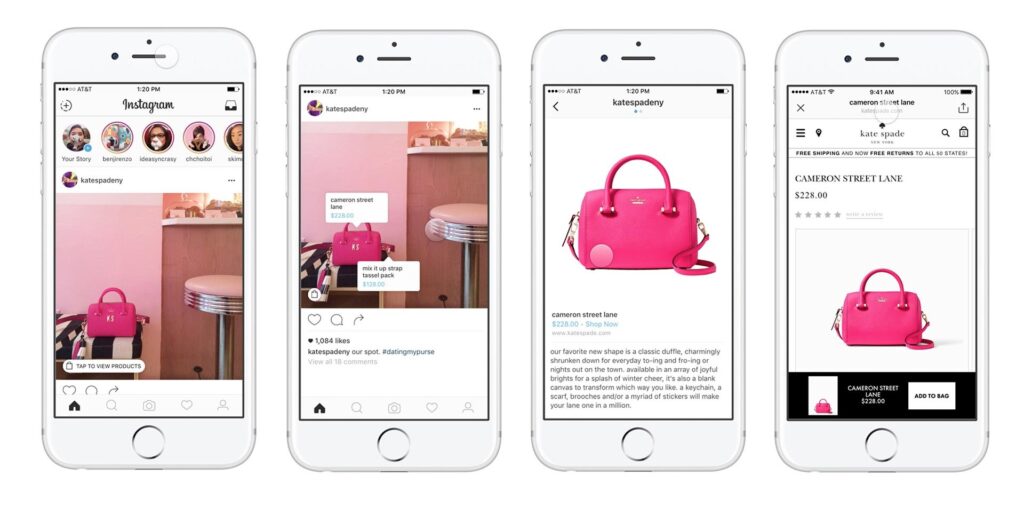Business
5 Social Commerce Trends to Watch in 2022
From Creators to the metaverse, social commerce is set to dominate the way we shop (and sell).

The digital economy is seeing some big changes in current times, with the advent of some new technologies, rapidly changing consumer behaviour, and some new industries forming out of these paradigm shifts. We’ve rounded up 5 of the big social consumer trends set to take centre stage in 2022.
1. The Booming Creator economy
One of the spaces that retail businesses are looking into in order to boost their businesses is the creator economy. From writers and designers to painters and influencers, online retailers are aiming to capitalise on the freelance market of creators out there to leverage their skills and marketability.
According to research conducted by InfluencerMarketingHub, 50 million people now consider themselves to be creators on social networks. These aren’t millionaire Youtube stars – they are ordinary people who have built successful side hustles by combining their love of specific hobbies or interests with an ability to create entertaining and trusted content (something that has boomed in the wake of a global pandemic).
Known as ‘Creators’, the timing couldn’t be more perfect. The average consumer is increasingly turning to Creators whom they know, trust and share the same interests with for everything from entertainment to product and service recommendations.
Social networks are both driving and responding to this trend by adding many new native monetisation tools to their platforms. These tools are designed to get content creators paid, which ensures they will continue to create both native and sponsored content, adding value to the brands they work with as well as the platforms they are leveraging.
What does this mean for brands? It’s simple. Thanks to Creators, brands can leverage existing fan bases and the content that Creators are developing to connect with target audiences. Remember, Creators have established followers and tend to do a better job of creating authentic, long-term customer relationships than any brand account can hope to achieve.
However, brands choosing to leverage this trend should be careful – the authenticity of Creators is what drives trust and engagement. Dictating content to Creators is therefore ill-advised. Instead, choose Creators who align with your brand values and whose audiences meet your own target audience criteria.
2. Social shopping
The difference between social commerce and traditional ecommerce is that social commerce is largely developed around social content, instead of the product itself.
What makes social commerce possible, however, is how platforms are supporting influencers through the tools and marketplaces they are creating, effectively making it possible for an influencer to create their own content about a brand and then link that content directly to a product page.

Whether a user is watching a livestream, a short video, they can easily be redirected to the product page, enabling them to purchase.
This is crucial because audiences do not arrive on social channels with the initial intention of shopping. Instead, they are looking to be entertained and possibly discover new products.
3. In-app purchases will continue to gain traction
The days of using social media purely for generating awareness and amplification appear to be over. Today, many consumers are lost if a purchase cannot be made then and there through a ‘checkout’ option.
The trend will only grow this year: shoppers don’t only want to buy products directly on social media – it’s an expectation.
According to Facebook, 81% of shoppers were already using social media to discover new brands and research products before the pandemic. This level of consumption, combined with lockdowns has resulted in a social shopping explosion. Letting users discover products and then checkout in the same app just makes sense.
Platforms are not only supporting this through in-app purchasing solutions, they are also moving away from third-party payment solutions and investing in their own payment gateways.
4. ‘Live’ shopping is the new in-store experience
Social commerce is on the rise but the in-person ability to touch and experience a product is still important. Enter live shopping, Creators and brands who live stream a product experience to showcase a product, answer questions and – of course – entertain in the process.
The trend has dominated China and is now making global waves. In 2020, Douyin (known as TikTok in other regions) generated 381.2 billion yuan from its live commerce business and continues to experience rapid growth and, according to Statista, this more than doubled in 2021. According to a survey on live streaming in China, about 77% of respondents had heard about a local platform, Taobao’s live streaming sales, followed by 67% who had heard about Douyin’s live streaming. If this growth is anything to go by, we can expect similar shopping experiences to reach our shores, supported by the social platforms themselves.
For example, Facebook’s Live Shopping tool allows brands and Creators to create live-streamed shopping events in which products are showcased in real-world settings, and the audience can be interacted with directly from the live broadcast. Since online shoppers do not have access to in-person sales assistants, live streaming events are changing the game when it comes to social commerce. And of course, the tool (and experience) wouldn’t be complete without the ability to purchase the product directly on the platform.
5. Welcome to the metaverse
How many family reunions already take place on Zoom? During the pandemic, we saw graduations on Minecraft and weddings relocated to Animal Crossing. It’s already possible to virtually try on clothes and as we’ve already highlighted, VR is only set to become more and more mainstream. The next step is the metaverse (also known as the spatial internet), and it’s not a very big step at all. This isn’t a trend that will dominate 2022, but it’s worth including in this list because of how our other trends will feed into the eventual reality of the metaverse.
If this sounds a bit too futuristic, remember that Facebook’s virtual reality social media platform, Horizon, is currently in beta testing and many other technology companies – including Microsoft – are investing heavily in platforms based on the spatial internet.
We’re in an exciting decade that is set to change the way we engage with our world and these trends are at the forefront of the next step in consumerism, entertainment and technology.
Choosing the right e-commerce platform for your business doesn’t need to be a daunting and tough decision, nor a time-consuming task, and Digitise makes it simple by having a website and online store-builder, CRM system, and marketing toolkit all in one place. And of course, keeps affordability in mind with flexible pricing packages. The drag-and-drop store builder gives you the ability to add products with ease, grow your client base, and feature multiple payment options, so that your site is ready for the hungry South African market.
Why not sign-up and get cracking on your business now? Check out Digitise here.
















